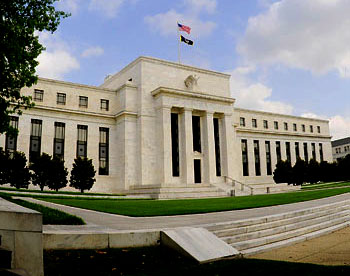 Here is tonight’s seminar in emergency monetary economics, cut to blog-friendly length and delivered in 140-character chunks:
Here is tonight’s seminar in emergency monetary economics, cut to blog-friendly length and delivered in 140-character chunks:
interfluidity Gentle request: When arguing 4 Fed activism, please specify the policy levers u support: buying long Treasuries, MBS, equities; neg IOR, etc
kdrum You pick. I’ll take anything at this point.
interfluidity there’s a strong consensus for “do something”. i bet the Fed gets that….if we want neg IOR (Sumner) or equity purchases (Rowe), it’d help 2 publically make the case rather than ask BB 2 “do something!”
MarkThoma No quarrel — I’ve been a skeptic from day one on Mon pol, have a J. Econometrics paper showing effectiveness is state [dependent]….I think all the focus on the Fed takes the pressure off of Congress, hence it’s a mistake. Tried to convince others, no luck
interfluidity Right now, only nonradical choices r buying long Ts & MBS. i don’t think those work. If BB agrees, he’s stuck til crisis is acute
ModeledBehavior I’m kind of thinking that MBS is the wrong type of debt to buy off of balance sheets at this stage in the game.
interfluidity i agree. but agency MBS is the only thing the Fed can buy besides Treasuries without playing a profoundly fiscal role.
interfluidity buying Treasuries and MBS are the only levers absent a crisis or shift in conventional wisdom. So he has to talk those up now
AndyHarless When safe assets have -100% return, people will buy risky ones (or spend) & the economy will recover…
interfluidity by what legal means would the Fed threaten -100% return? threaten to unilaterally cancel currency? (we won’t honor our notes!)
ModeledBehavior Negative IOR…although that would be an incredible feat.
interfluidity Negative IOR would almost certainly be doable w/o Congress. Call it a variable fee for Fed services. Banks do that.
ModeledBehavior cld directly and dramatically affect real interest rates, without fear of the ZLB.
interfluidity well, go too far below zero and you have to worry about a run the physical cash. but ZLB becomes -0.5% LB at least…
ModeledBehavior I don’t know…1% neg int. on hand-to-hand currency saved Worgl, Austria in 1932 during the G. Depression and according to Irving Fisher, caused no inflationary tendency (flat SRAS).
Did you catch all that? The Fed could buy long-dated treasury bills or Mortgage Backed Securities in order to pump cash into the economy. But that might not work, and if Ben Bernanke agrees then the Fed is stuck. So how do we force banks to put more money into circulation? Answer: right now the Fed pays banks 0.25% Interest On Reserves — that is, interest on cash kept on account at the Fed. Lower that to zero, and banks have less incentive to keep cash at the Fed and more incentive to do something else with it.
But wait! How about if we pay negative IOR? Then banks will really have an incentive to do something else with their money. They’ll loan it out. Real interest rates will decline even though we’re at the Zero Lower Bound already. The economy will boom. And if Fisher was right, it won’t have an impact on Short Run Aggregate Supply and thus produces no danger of excessive inflation. Hooray!
Maybe. Anyway, that’s the seminar. At the moment, though, it doesn’t look like the Fed plans to do anything of the sort. Thus interfluidity’s plea to start talking this stuff up because “the Fed needs cover for radicalism.” So talk already!















